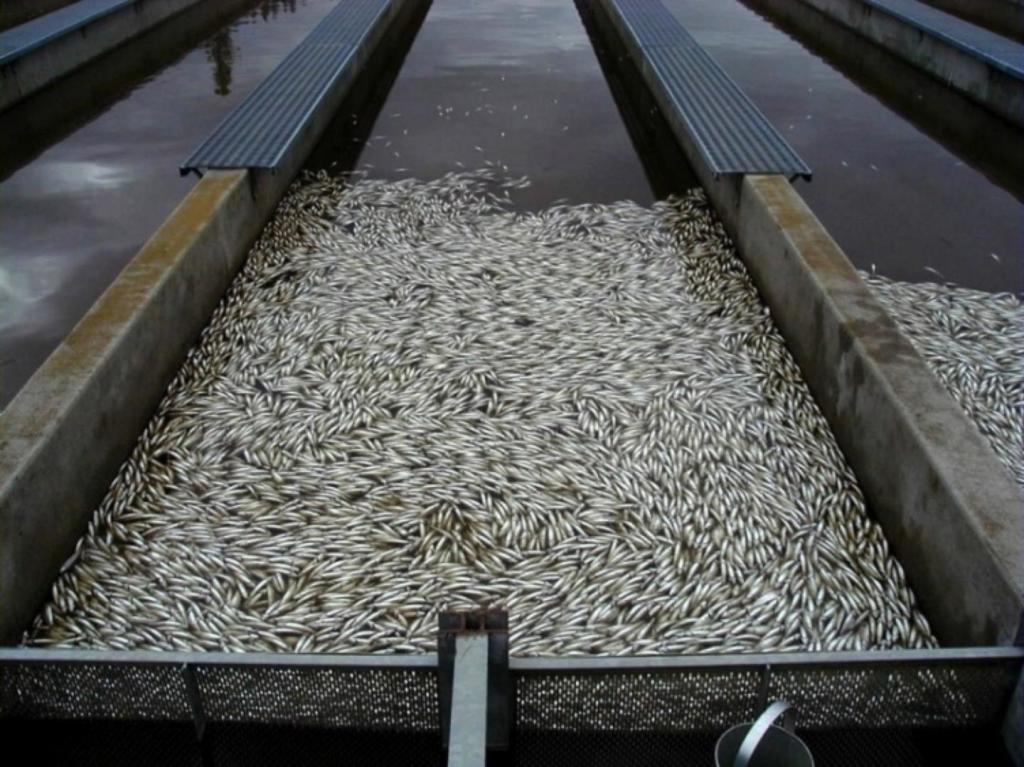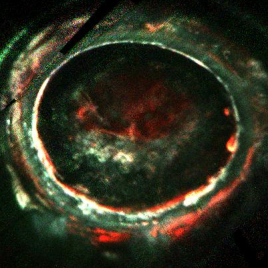
A single hatchery pond of juvenile steelhead trout undergoing an IHNV epidemic.
(Credit: Dworshak National Fish Hachery, Orofino, Idaho.)
A new study explores the spread of infectious hematopoietic necrosis virus (IHNV), which plagues Pacific salmon and trout. Researchers looked at the spread of IHNV among juvenile hatchery-raised fish in the Pacific Northwest, where rates of infection and mortality are high. Hatchery-raised salmon present a unique challenge when it comes to IHNV detection, because while hatcheries can be controlled, juveniles migrate to the Pacific Ocean as part of their life cycle. Additionally, IHNV is easier to detect in juveniles, while the virus is asymptomatic in adults returning to the hatcheries to spawn. The study found that returning adults were likely the most frequent source of viral introduction to juveniles at hatcheries, followed by within-hatchery juvenile-to-juvenile transmission. Figuring out how the virus is transmitted within hatcheries can help improve management systems to prevent disease.
Authors:
Rachel Breyta, Ilana Brito, Gael Kurath, Shannon LaDeau
Corresponding author:
Rachel Breyta, Oregon State University; Cary Institute of Ecosystem Studies, Millbrook, NY, US, Email: breytar@caryinstitute.org
Original paper published in Ecology & Evolution in 2017.

